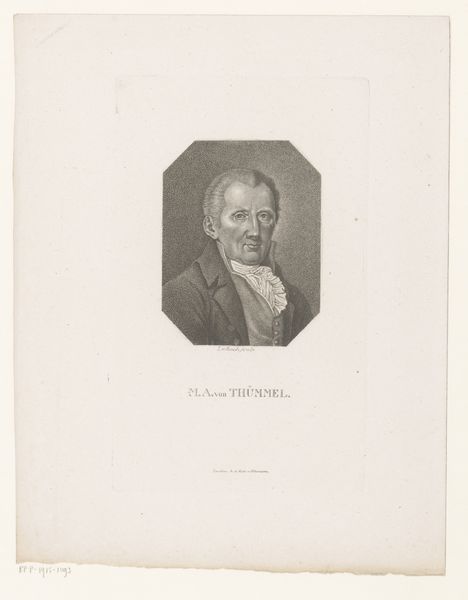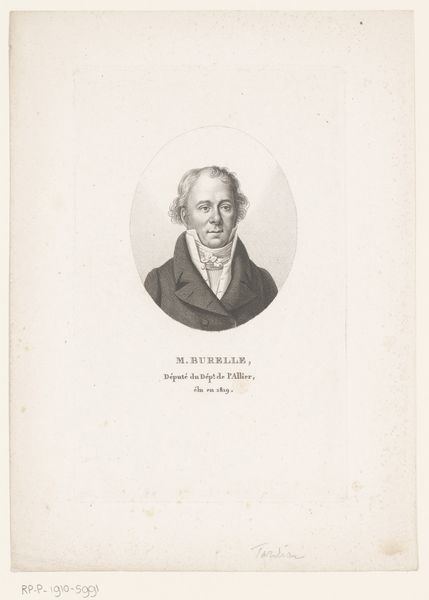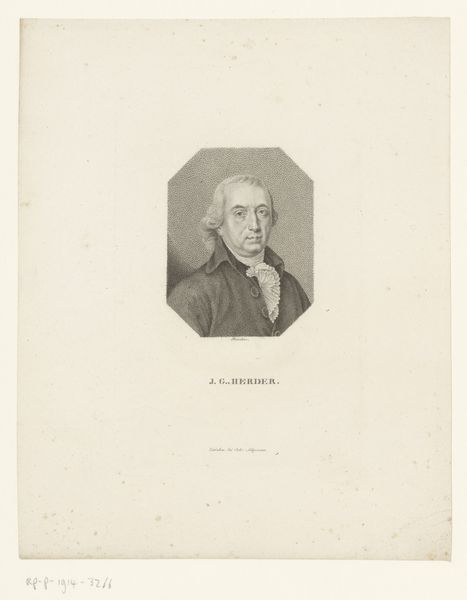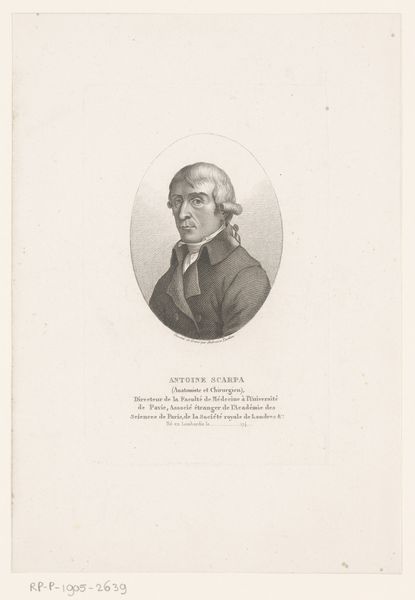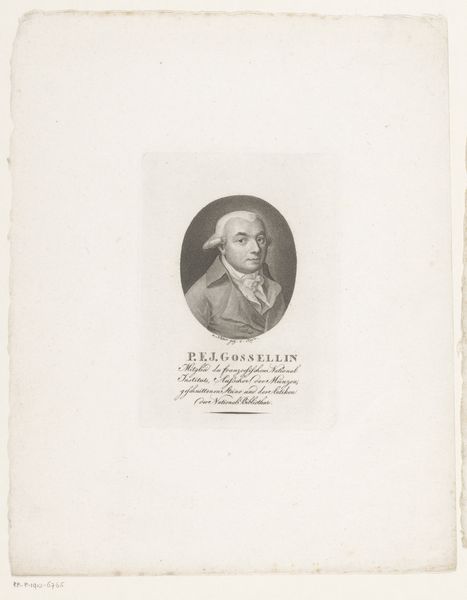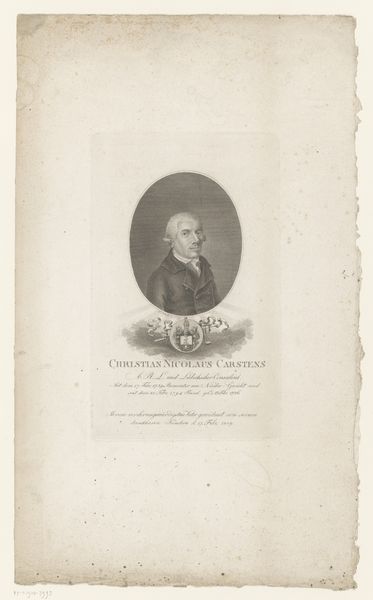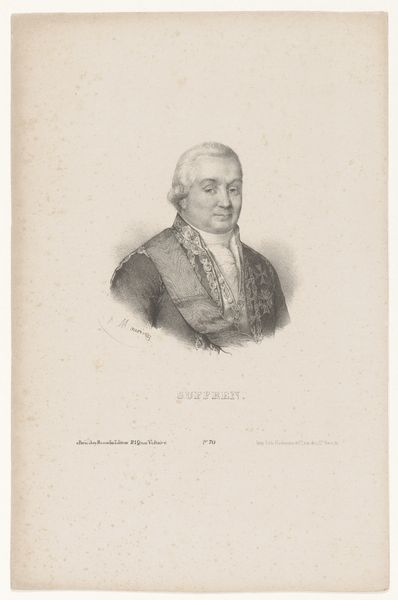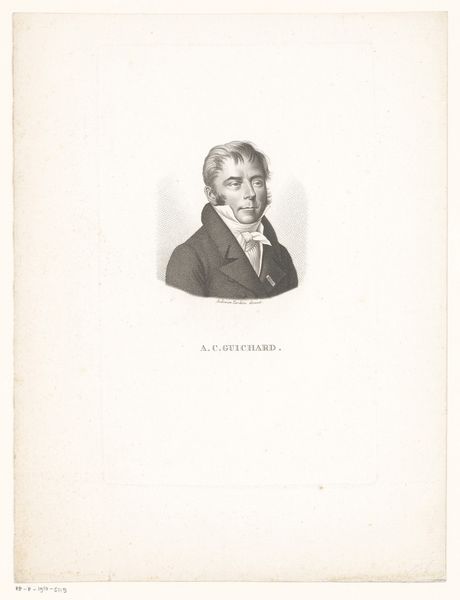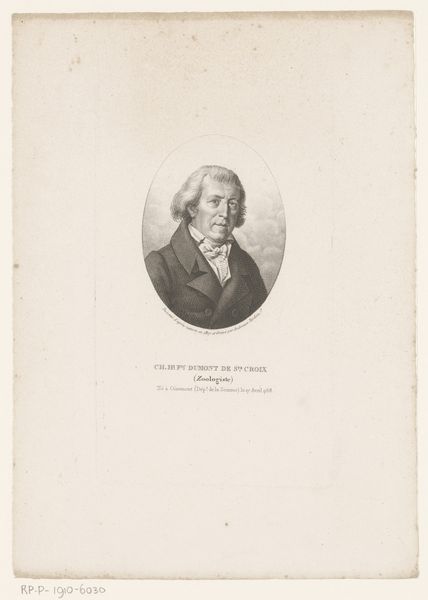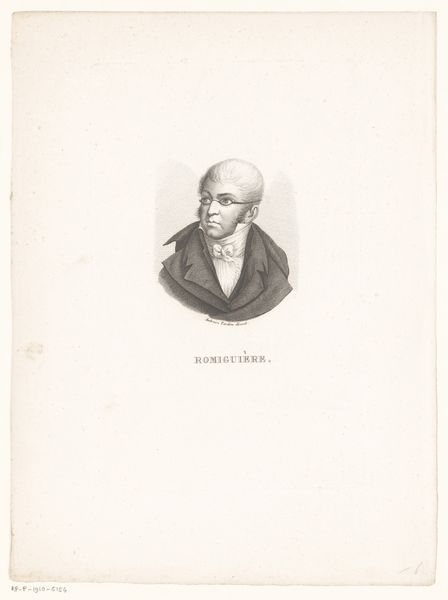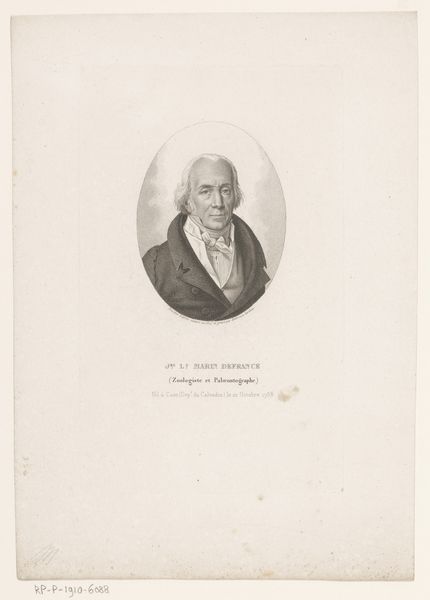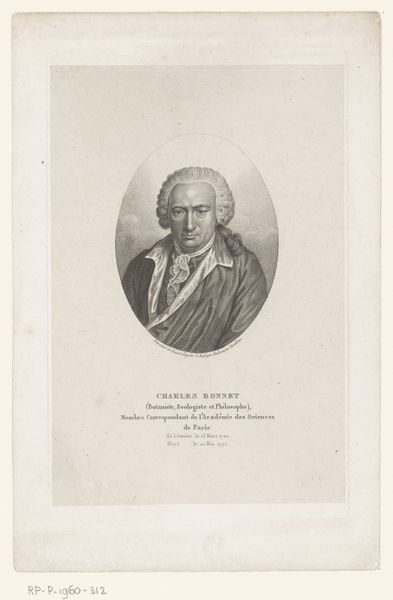
print, engraving
#
portrait
#
neoclacissism
# print
#
academic-art
#
engraving
#
realism
Dimensions: height 223 mm, width 140 mm
Copyright: Rijks Museum: Open Domain
Curator: Looking at this portrait, I’m struck by its severe, almost stoic quality. Editor: Indeed. This is "Portret van Jean-Louis Admyrauld," an engraving done by Ambroise Tardieu between 1820 and 1821. What you are sensing comes from its Neoclassical style. Note the emphasis on clean lines and balanced composition within that oval frame. Curator: It feels very removed, almost cold. It’s the type of formal portraiture you’d expect of an early 19th-century deputy. It raises questions for me about printmaking as a medium for portraying political figures. Editor: See how Tardieu utilizes the technique of engraving. The fine lines creating gradients give it this wonderful texture and luminosity. There is the material process, transforming metal and paper to an image, which inherently introduces degrees of control. This suggests ideas of disseminating ideals of political leaders. Curator: It speaks to the rise of print culture at the time, democratizing images, albeit in a controlled manner, through the technology of the press. Think about the labor involved in creating each of these engravings, potentially disseminated widely. Who was able to acquire and circulate these prints and how were such images consumed and engaged? Editor: Certainly, mass reproduction implies a visual flattening. Do you feel the portrait itself achieves anything aesthetically through its formal elements alone, divorced from its social functions? The shading of his features seems to indicate the dignity of his figure, the way the face stands in relation to the coat—those relations signify character through line. Curator: The meticulous technique flattens emotion into the image. I think, inevitably, we see not just Admyrauld, but how printmaking was becoming a critical element in solidifying and marketing figures within political society. What appears austere reflects deliberate, labor-intensive practices which affected broader ideas of governance. Editor: I appreciate your points on its material and social ramifications. The work does lead you down this historical avenue regarding print culture. I still, nonetheless, believe one can grasp aspects like line work here that transcend beyond those readings in relation to politics. Curator: And perhaps in acknowledging both its aesthetic finesse alongside its historical contexts, we’re richer in our interpretation of Tardieu’s piece. Editor: A compelling intersection, truly.
Comments
No comments
Be the first to comment and join the conversation on the ultimate creative platform.
